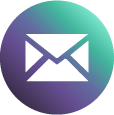- /
- ASP Web Summit
- /
- Webinars Series #4

Efficiency in healthcare refers to do more and better with less resources to provide health services who are cost-effective, safe and based on high standards of care.1
Efficiency can be achieved with the implementation of strategies that reduce the number of unnecessary resources, optimize workflows, and adopt innovation.2
Efficiency in healthcare has become a cornerstone, as technologic advances and greater coverage creates pressure on limited budgets, and ecologic aspects must also take into consideration.1
Increasing efficiency in healthcare contributes to their economic sustainability, competitiveness, while reducing environmental damage and lastly improving quality of care and quality of life.3,4
Without the reprocessing of reusable medical devices most procedures could not take place. Such reprocessing is also central for the adoption of a circular economy strategy, lowering the climate damage.10-12
Reprocessing is a complex process with several steps and different players that requires efficient technologies, proficient human resources and good health technology assessments.13-15
The Central Sterilization Services Department, where multiple strategies can be adopted in different moments, including the adoption of low temperature sterilization can contribute to maximize efficiency. 18-20
We will also cover the importance of good traceability and material handling systems to improve efficiency in this field.21
Taking as a point of departure the global concept of Efficiency in Healthcare, its applicability and implications for medical devices reprocessing, in this Webinar Series, Efficiency in Medical Devices reprocessing: the road ahead, we will dive into the different scenarios where medical devices are used and need to be reprocessed: the operating room and the applicability of the lean principles to increase efficiency in the global process of reprocessing.16,17
By Dr. Carlos Palos
SCIENTIFIC DIRECTOR

Prof. Francesco Venneri

Mr. Manuel Valente

Mr. Wouter Meert

Eng. Jonathan Hart

INFECTION CONTROL & ANTIMICROBIAL STEWARDSHIP
LISBON, PORTUGAL

Prof. Francesco Venneri
Clinical Risk Manager and Patient Safety Officer
Florence Healthcare System, Italy
SYNOPSIS:
General analysis of the impact of DM Reprocessing efficiency on healthcare systems (addressing the right reprocessing process according to Spaulding classification, certification & accreditation processes, value base healthcare, and healthcare professionals training) that have contributed to reducing the SSI related to MD reprocessing, in the last decade.
SAVE THE DATE: 23rd MARCH

QUESTIONS:
- What is the HAI and SSI impact in healthcare?
- How does efficacy and efficiency influence quality healthcare outcome?
- What are the milestones considering that:
Sustainability and value-based healthcare are the challenges of the future and MD reprocessing may have an important role in assuring these goals.
Learn more & register to webinar

Mr. Manuel Valente
Department of Quality Nurse Director
Unidade Local de Saúde de Santo António, Porto - Portugal
SYNOPSIS:
All over the world, healthcare has an increasing financial burden because of aging population and evolving technologies, both of which drive an increasing cost trend.
In addition, the healthcare market is more competitive and patients are more informed and demanding. On the other hand, evidence demonstrates that in the healthcare area, 30-40% of costs are waste.
Improving the efficiency and effectiveness of medical device reprocessing is one component of the solution for providing more and better healthcare at a lower cost.
The operational response to this challenge must be to reduce the number of activities or tasks that do not add value to the process, in order to make them “fat-free”. This is the basis of the philosophy “Lean healthcare”
SAVE THE DATE: 29th JUNE

QUESTIONS:
- What is LEAN management?
- What are the classical types of waste?
- How can we change the actual operational management practice?
Learn more & register to webinar

Mr. Wouter Meert
Process-Project Manager CSSD, Head Instrument Management
Uz Leuven, Belgium
Manual labor is necessary for the daily operation of a CSSD. Many of the critical processes remain without automation. Additionally, customer requirements can increase workloads and define the process flow within our departments. How can we change this inefficient use of resources based on random customer demands? By introducing ISO 13485 quality system requirement standards in your department, you are able to strictly define your own processes and continuously improve them. ISO 13485 standards allow you to use various types of data to conduct process analyses and identify areas where improvements should be made. The fundamental idea is to “secure our qualitative sterile end-product in the most efficient way.”
SAVE THE DATE: 27th SEPTEMBER

QUESTIONS:
- How often is CSSD department analyzed/followed up?
- Do institutions often perform risk analyses at CSSD departments?
- Do CSSD departments have a long-term policy?
- Can CSSD departments be robotized?
Learn more & register to webinar

Eng. Jonathan Hart
Head of Technological Innovation and Health Technology Assessment Policlinic Universitario Campus Bio-Medico
Rome, Italy
Effectiveness and efficiency of MD reprocessing are achieved through proper selection, use, maintenance, and technological updates of the equipment involved (decontaminators, washers/disinfectors, sterilizers, etc.) as well as adequate planning of workflows, procedures, staffing, and organization in general in order to meet throughput needs. Health Technology Assessment (HTA) takes all these aspects into account and therefore can play an important role in managing reprocessing efficiency.
SAVE THE DATE: 11th NOVEMBER

QUESTIONS:
- What does health technology assessment (HTA) provide
- What role can HTA play MD reprocessing efficiency?
- In improving efficiency which factors should be assessed?
- How can new technologies help to improve efficiency in MD reprocessing?
Learn more & register to webinar
References :
1. European Observatory on Health Systems and Policies, Cylus, Jonathan, Papanicolas, Irene & Smith, Peter C. (2017). Identifying the causes of inefficiencies in health systems. Eurohealth, 23 (2), 3 – 7. World Health Organization. Regional Office for Europe. https://apps.who.int/iris/handle/10665/332641.
2. Efficiency: What It Means in Economics, the Formula To Measure It (investopedia.com), Accessed on the 10th January 2023
3. Mortimer, F., Isherwood, J., Wilkinson, A., & Vaux, E. (2018). Sustainability in quality improvement: redefining value. Future healthcare journal, 5(2), 88–93. https://doi.org/10.7861/futurehosp.5-2-88
4. Zarulli V, Sopina E, Toffolutti V, Lenart A (2021) Health care system efficiency and life expectancy: A 140-country study. PLoS ONE 16(7): e0253450. https://doi.org/10.1371/journal.pone.0253450
5. Prevalence of healthcare-associated infections, estimated incidence and composite antimicrobial resistance index in acute care hospitals and long-term care facilities: results from two European point prevalence surveys, 2016 to 2017 (Pag. 7, Table 3) https://www.eurosurveillance.org/content/10.2807/1560-7917.ES.2018.23.46.1800516 3.
6. Special Report Top 10 Patient Safety 2020 – Executive-Brief, ECRI, page 9, 5. Device Cleaning, Disinfection, and Sterilization. https://www.ecri.org/landing-top-10-patient-safety-concerns-2020
7. Surgical site infections linked to contaminated surgical instruments. The Journal of hospital infection, 81(4), 231–238. https://doi.org/10.1016/j.jhin.2012.04.023.
8. Infections and exposures: reported incidents associated with unsuccessful decontamination of reusable surgical instruments. The Journal of hospital infection, 88(3), 127–131. https://doi.org/10.1016/j.jhin.2014.08.007
9. Badia, J. M., Casey, A. L., Petrosillo, N., Hudson, P. M., Mitchell, S. A., & Crosby, C. (2017). Impact of surgical site infection on healthcare costs and patient outcomes: a systematic review in six European countries. The Journal of hospital infection, 96(1), 1–15. https://doi.org/10.1016/j.jhin.2017.03.004
10. Andrea J. MacNeill, et al. Transforming The Medical Device Industry: Road Map To A Circular Economy. Health Affairs, doi.org/10.1377/hlthaff.2020.01118.
11. WHO Europe. Circular Economy and Health: opportunities and risks. Geneva, 2018.
12. G.M. Kane, C.A. Bakker, A.R. Balkenende. Towards design strategies for circular medical products. Resources, Conservation and Recycling, Volume 135, 2018, Pages 38-47, https://doi.org/10.1016/j.resconrec.2017.07.030)
13. Emily A. Hildebrand, L. Bryant Foster, Russell J. Branaghan. Chapter 19 – The Human Factors of Reprocessing Reusable Medical Equipment,Editor(s): Mary Beth Privitera, Applied Human Factors in Medical Device Design, Academic Press,2019,Pages 303-314,ISBN 9780128161630,https://doi.org/10.1016/B978-0-12-816163-0.00019-0.
14. Introduction to Health Technology Assessment. https://www.nlm.nih.gov/nichsr/hta101/ta10103.html:101
15. ASP Webinar#5 Series 2 factsheet: Health Technology Assessment for medical devices reprocessing improvement. Jonathan Hart. Available on: https://aspuniversity.com/pro/wp-content/uploads/2022/11/AD-220242-01-CT_A-MDR_webinar_5_series3_factsheet.pdf
16. Dyas, A. R., Lovell, K. M., Balentine, C. J., Wang, T. N., Porterfield, J. R., Jr, Chen, H., & Lindeman, B. M. (2018). Reducing cost and improving operating room efficiency: examination of surgical instrument processing. The Journal of surgical research, 229, 15–19. https://doi.org/10.1016/j.jss.2018.03.038.
17. Rothstein, D. H., & Raval, M. V. (2018). Operating room efficiency. Seminars in pediatric surgery, 27(2), 79–85. https://doi.org/10.1053/j.sempedsurg.2018.02.004
18. McCreanor, V., & Graves, N. (2017). An economic analysis of the benefits of sterilizing medical instruments in low-temperature systems instead of steam. American journal of infection control, 45(7), 756–760. https://doi.org/10.1016/j.ajic.2017.02.026 13.
19. Alfred, M., Catchpole, K., Huffer, E., Fredendall, L., & Taaffe, K. M. (2020). Work systems analysis of sterile processing: decontamination. BMJ quality & safety, 29(4), 320–328. https://doi.org/10.1136/bmjqs-2019-009422.
20. Alfred, M., Catchpole, K., Huffer, E., Fredendall, L., & Taaffe, K. M. (2021). Work systems analysis of sterile processing: assembly. BMJ quality & safety, 30(4), 271–282. https://doi.org/10.1136/bmjqs-2019-010740.
21. Martins, F., Ribeiro, M., Implementation and use of automated traceability system in the central sterile supply department. Rev. SOBECC, São Paulo. JAN./MAR. 2017; 22(1): 52-58. DOI: 10.5327/Z1414-4425201700010009.




